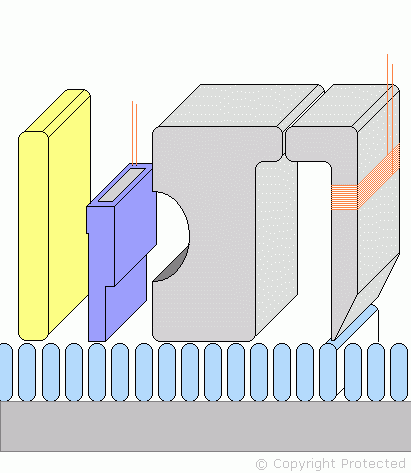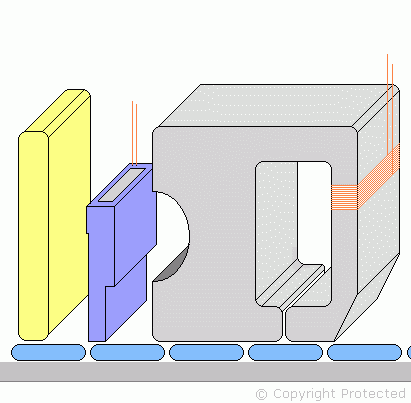Perpendicular / Vertical Recording

Perpendicular recording, also known as Vertical Recording, or PMR (Perpendicular Magnetic Recording) is a technology, which allows digital data to be stored on a hard disk surface forming a high-density storage device.
Professor Shun-Ichi Iwasaki, at the Research Institute of Electrical Communications, Tohoku University, Japan, first proved this technology advantageous for magnetic recording.
An energised coil produces a magnetic field shown in red. The magnetic flux focused to a sharp point causes the cell directly underneath it to be magnetised perpendicularly to the surface of the disk.
The disk has a magnetic under layer, which conducts the magnetic flux readily. The gap between the sharp pole tip and this under layer is where the magnetic flux is the most concentrated, thus readily establishing a magnetic cell on the top layer.
When the current in the coil is reversed, the magnetic field and the poles also reverse, hence the cell underneath becomes magnetised in the opposite direction. Each cell can therefore represent a binary '1' or '0' represented by the direction of its magnetic field.
Longitudinal Magnetic Recording (LMR)

Longitudinal Magnetic Recording (LMR) is the conventional method of recording where the magnetic cells align horizontally along the surface of the disk, thus occupying more space.
An energised coil produces a magnetic field established by the metal core. The flux focuses over the gap and the cell directly below the gap is magnetised. This principle is very similar to that used in tape recorder heads.
Recording Limit
Magnetic material is composed of small grains each with a random shape and size. Due to this randomness, 100 grains are required to represent a cell, which can then be magnetised to represent a binary '1' or '0'.
The 100-grain limit is a theoretical limit and any magnetisation involving lesser number of grains would be unstable. Heat is the biggest enemy of magnetism because it causes the grains to re-align randomly thus losing the magnetism.
The grains of magnetic media are so small that even thermal energy changes within the air can cause the magnetism to change.